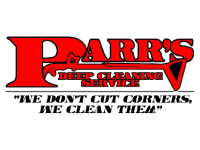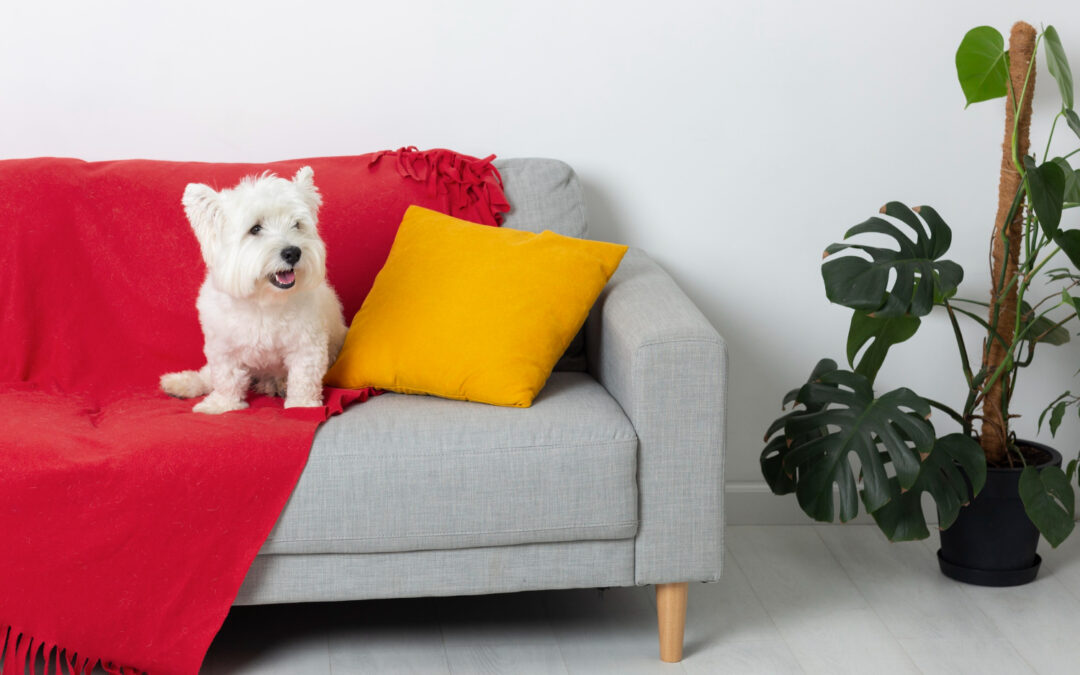Pets bring joy and companionship into our lives, but they also come with a little something extra—pet hair. Dog or cat fur clinging to your couches and chairs is not unusual. This hair can become a nuisance, especially when it embeds deep into the fabric fibers, making it tough to remove with just a quick swipe.
Pet hair can lead to allergy flare-ups and unpleasant odors in your home. It’s important to regularly tackle the issue before it gets out of hand. Fortunately, with some simple techniques and the right tools, keeping your upholstery free of pet hair doesn’t have to be a daunting task. Maintaining a fur-free home feels cleaner and can make your furniture look as good as new.
Understanding Why Pet Hair Sticks to Upholstered Furniture
Pet hair clings to upholstered furniture because of static electricity and the texture of the fibers. The static charge on fabric can attract pet hair, making it stick like a magnet. Once hair is on the fabric, it works its way into the fibers, making it hard to remove. The weave of the fabric, especially on textured or tightly woven upholstery, can trap hair more easily, causing it to become deeply embedded.
Lingering pet hair isn’t just about messiness; it can also cause problems like allergies. Hair from cats and dogs carries dander, small skin flakes that can trigger allergic reactions. This makes it important to deal with pet hair regularly to keep the air clean and safe to breathe. Plus, if left unchecked, pet hair can add to unpleasant odors as it mixes with dirt, spills, or dust in the fabric.
Consistent removal of pet hair is crucial for maintaining upholstery. Regular cleaning helps preserve the appearance of your furniture and contributes to a healthier home environment. Ignoring pet hair can lead to more complicated cleaning tasks later on and potential wear and tear on fabrics, making routine maintenance essential for a clean and pleasant home environment.
Everyday Tools and Hacks to Tackle Pet Hair
Getting rid of pet hair doesn’t have to be a chore if you have the right tools. Here’s a handy list of items that can help you tackle the fur on your furniture:
1. Lint Rollers: A quick swipe with a sticky lint roller can grab hair off surfaces, making it easy to use during everyday clean-ups.
2. Rubber Gloves: Lightly dampened rubber gloves can be run over the surface to collect hair. The texture of the gloves helps lift and roll the hair effectively.
3. Vacuum Cleaners: Using vacuum cleaners with pet attachments offers a powerful way to clean fur. These attachments are designed to pull pet hair away from upholstery, reaching into seams and crevices where hair tends to gather.
If you’re dealing with stubborn hair, a little fabric softener mixed with water can help. Spritz the solution lightly over the upholstery and then wipe with a washcloth or a sponge. This trick helps loosen the hair and makes it easier to remove.
These everyday items and hacks make managing pet hair less of a struggle, keeping your upholstered furniture looking fresh and tidy. With these tools at your disposal, you can maintain a fur-free zone, even with the hairiest of pets.
Routine Cleaning Techniques for Pet Hair Control
Keeping pet hair at bay requires some consistent routines. One effective way to manage the fur is by establishing a regular vacuuming schedule. Aim to vacuum your furniture at least once a week, or more frequently if your pet is a heavy shedder. This helps pick up loose hair before it has the chance to embed itself deeply into the fabric. Using the right vacuum with upholstery attachments ensures you reach all those hidden areas.
Upholstery-safe cleaning products can make a significant difference in maintaining a clean fabric. Products designed specifically for furniture can help break down oils and dander that can cause hair to cling tightly to fabric fibers. Always test a small area to ensure the cleaner doesn’t discolor your upholstery.
Pay special attention to seams and crevices during your cleaning routine. Hair often accumulates in these areas, requiring extra effort to remove. Use a crevice tool to run along seams and edges, making sure you pull out any hidden hair. By maintaining these regular cleaning habits, you’ll greatly reduce the amount of fur on your upholstered furniture.
Long-Term Strategies to Minimize Pet Hair on Furniture
Minimizing pet hair involves a mix of smart strategies. Using pet covers or throws on your furniture is a practical start. Not only do they protect furniture from hair, but they can be easily removed and cleaned. Choose machine-washable covers for the best convenience.
Grooming your pets regularly helps reduce shedding. Brushing your furry friends outside or in an area where you can vacuum afterward will help control how much hair ends up on your furniture. Grooming doesn’t just help with shedding—it also keeps your pet’s coat healthy and your home cleaner.
Training your pets to stay off the furniture can also reduce hair accumulation. Teaching pets to enjoy a personal bed or designated spot in the home instead of your couch makes a big difference. If going completely fur-free on furniture isn’t possible, setting boundaries—like letting your pet on a blanket-covered area—can still help manage the hair problem effectively.
Conclusion
Keeping your furniture free of pet hair might seem challenging, especially if you’ve got furry friends who love to snuggle. But with the right tools, strategies, and a bit of discipline, you can maintain a welcoming and clean home environment. By understanding why pet hair sticks, utilizing everyday hacks, and committing to regular cleaning routines, managing pet hair becomes less overwhelming. Over time, you will notice a cleaner space and fewer allergy triggers in your home.
For those especially tricky spots or when the task seems too daunting, let Parr’s Deep Cleaning Service lend a hand. Our professional upholstery cleaning services can handle even the toughest pet hair problems, leaving your furniture spotless and fresh. Keep your home looking its best—reach out to Parr’s Deep Cleaning Service for a clean you can count on. Contact our team today at (714) 470-1955.



